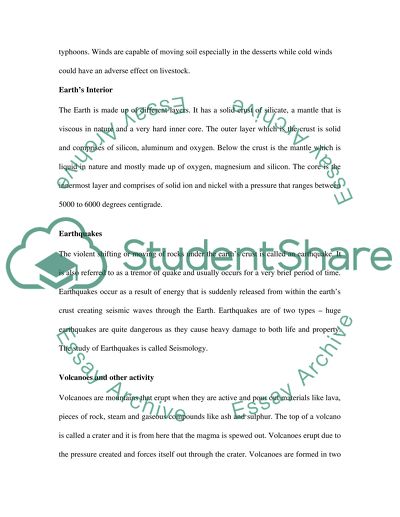Glaciers,Deserts,Wind; Earth's Interior, Earthquakes, Volcanos and Assignment. Retrieved from https://studentshare.org/physics/1584688-glaciersdesertswind-earths-interior-earthquakes-volcanos-and-other-activity
Glaciers,Deserts,Wind; Earth'S Interior, Earthquakes, Volcanos and Assignment. https://studentshare.org/physics/1584688-glaciersdesertswind-earths-interior-earthquakes-volcanos-and-other-activity.


